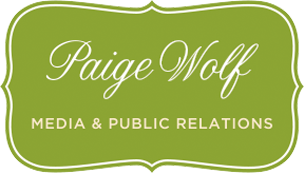One of my fellow “Women Eco-Warriors” Anna Hackman, sustainability expert and editor of Green Talk, is leading the movement to get arsenic out of rice products. Yes, arsenic in rice. As in poison in a food staple. Think that sounds nutty? Here’s what she has to say:
Arsenic in rice is back in the news again. The latest report is from Consumer Reports’ study that revealed dangerous levels in both rice and products containing rice. The Consumer Reports study joins a long list of several prior studies, which includes the recent Dartmouth study. Despite all the studies, the FDA and the European Union have failed to act. This inaction prompted a petition calling on the FDA and EU to regulate arsenic in rice and by-products. We are all at risk. Rice is not simply a baby, gluten free or ethnic food — its byproduct is in many foods.
How did Arsenic get into rice in the first place? Arsenic is a naturally occurring element in the soil. However, inorganic arsenic is found in the soils that were contaminated by arsenic based pesticides and fertilizers, industrial districts or mining areas, municipal waste, or contaminated water.
Eighty percent of the rice is grown in the US is from the south central area on lands that were previously sprayed with arsenic pesticide to reduce cotton bollweevils. In addition, arsenic laden manure has been used as fertilizer. Arsenic remains in the soil. Due to the nature of how rice is grown in flooded waters, it sucks up the arsenic from the soil.
What is the danger? According to the EPA, the ingestion of inorganic arsenic can lead to cancer of the skin, bladder, liver, and lung. There are no studies of low levels long term arsenic exposure in food; however studies relating to low level arsenic exposure in water have shown increased likelihood of diabetes 2 and poorer neuropsychological functioning.
Why should YOU be concerned? You might be thinking, “I don’t eat rice so I can’t be affected.” Not true, since many products contain rice and its byproducts. Look for rice flour, brown rice syrup, and simply rice in the crackers, cereal, cereal bars, baby food, gluten free food, energy bars, and energy drinks just for starters. Worse yet, babies eat a lot of rice products such as cereals and needless to say, they are more sensitive to chemicals like arsenic.
Does it affect all rice? No. However, 80% of all rice grown in the US comes from areas where inorganic arsenic is an issue. However, this takes some legwork to know which rice products are safer than others. And it doesn’t matter if you only eat organic rice since arsenic is already in the soil before rice is planted.
What can you do to reduce Arsenic level? Consumer Reports recommends certain guidelines to limit your rice intake. But simply, wash your rice first and cook it in 6 parts water to 1 part rice. Read here for more tips, different grains to source, and how agricultural changes can reduce the problem.
But we need to change regulation by urging FDA to change the standard. Sign the petition asking for regulation. We should not have to agonize over the ingredients so that we don’t exceed the daily rice limitations recommended by Consumer Reports. And please share the petition with your friends, family, and social media. It takes a village.













